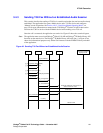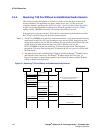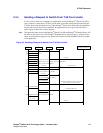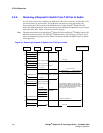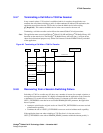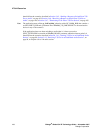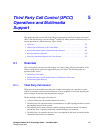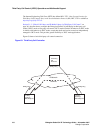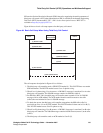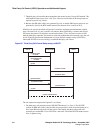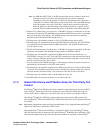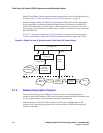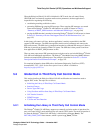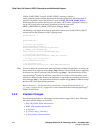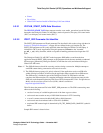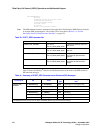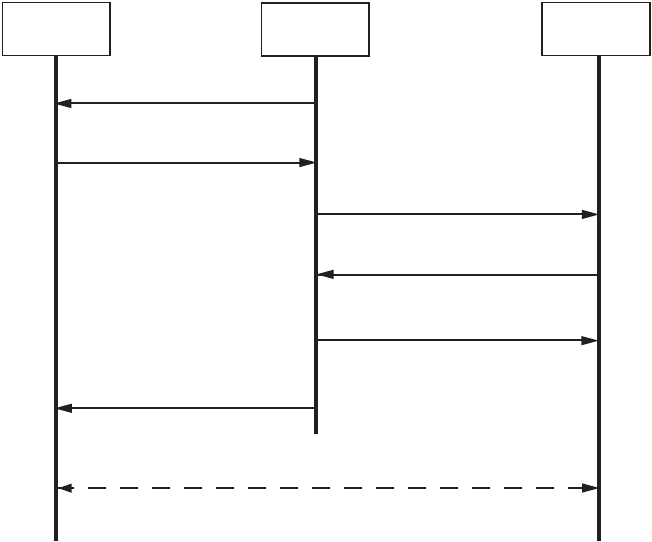
Dialogic
®
Global Call IP Technology Guide — November 2007 339
Dialogic Corporation
Third Party Call Control (3PCC) Operations and Multimedia Support
SIP uses the Session Description Protocol (SDP) format for negotiating the media parameters of
third party call control calls. Further information on SDP is available in the Internet Engineering
Task Force (IETF) document RFC 2327 - SDP: Session Description Protocol. RFC 2327 is
available at http://ietf.org/rfc/rfc2327.txt.
Figure 64 shows a basic call setup sequence for third party call control:
Figure 64. Basic Call Setup When Using Third Party Call Control
The call sequence description for Figure 64 is as follows:
1. The third party call controller sends a SIP INVITE method (1). This INVITE does not contain
SDP information. The INVITE method causes User A’s phone to ring.
2. When User A’s phone rings, User A answers. A 200 OK (2) message is sent from User A to the
third party call controller. The 200 OK message contains an SDP offer (offer1).
3. Per SIP rules (RFC 3261), the third party call controller must respond to User A’s 200 OK
message with an ACK method. The ACK method should contain an answer to the offer
(offer1) that was included in User A’s 200 OK message.
4. To obtain the answer, the third party call controller encapsulates the SDP offer (offer1) it
received from User A in an INVITE method. This INVITE method is then sent to User B (3).
This INVITE method causes User B’s phone to ring.
5. When User B’s phone rings, User B answers. A 200 OK (4) message is sent from User B to the
third party call controller. The 200 OK message contains an SDP answer (answer1) to the offer
(offer1).
6. The third party call controller sends an ACK method to User B (5).
User B
Third Party
Call Controller
User A
(1) INVITE no SDP
(2) 200 OK offer1
(3) INVITE offer1
(4) 200 OK answer1
(5) ACK
(6) ACK answer1
(7) RTP (media stream)



